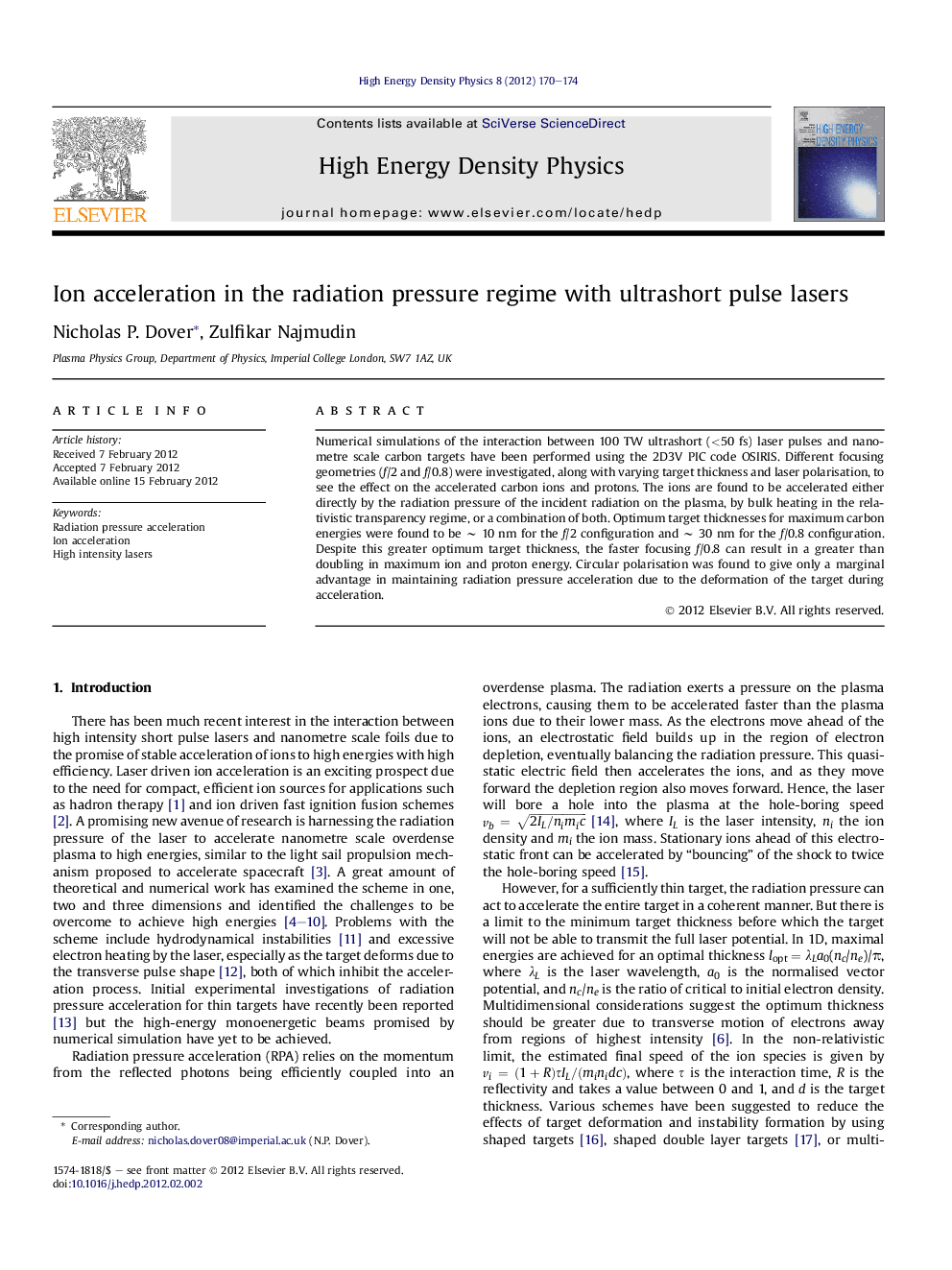| Article ID | Journal | Published Year | Pages | File Type |
|---|---|---|---|---|
| 1772561 | High Energy Density Physics | 2012 | 5 Pages |
Numerical simulations of the interaction between 100 TW ultrashort (<50 fs) laser pulses and nanometre scale carbon targets have been performed using the 2D3V PIC code OSIRIS. Different focusing geometries (f/2 and f/0.8) were investigated, along with varying target thickness and laser polarisation, to see the effect on the accelerated carbon ions and protons. The ions are found to be accelerated either directly by the radiation pressure of the incident radiation on the plasma, by bulk heating in the relativistic transparency regime, or a combination of both. Optimum target thicknesses for maximum carbon energies were found to be ∼ 10 nm for the f/2 configuration and ∼ 30 nm for the f/0.8 configuration. Despite this greater optimum target thickness, the faster focusing f/0.8 can result in a greater than doubling in maximum ion and proton energy. Circular polarisation was found to give only a marginal advantage in maintaining radiation pressure acceleration due to the deformation of the target during acceleration.
